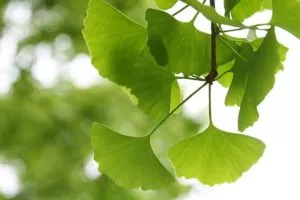Tree Identification: Ginkgo Tree
An often-forgotten species of gymnosperms are the ginkgo or maidenhair trees, Ginkgo biloba. They are part of an ancient order of plants having both fern and conifer characteristics and ginkgo is the sole surviving genus!

This species thrived during the late Mesozoic period, about 150 million years ago, until it became extinct in all parts of the world except China. This was due to its religious significance and medicinal uses; it had been planted extensively around shrines and temples. They are known for their longevity, with the oldest reported female ginkgo being about 3,000 years old in the Shandong Province of China.

Ginkgo is a medium-sized tree growing up to 80 feet tall. The bark is thick with an ash-gray color. The leaves are borne in clusters of 3-5 with a very distinct fan shape. The male and female trees can be distinguished by their reproductive structures and by smell, depending on the time of year. The male reproductive structures are short-stalked catkins that are 3-6 cm long and yellow. Whereas the female reproductive structures look like an acorn, 1-2 cm in size. The seed is covered by a pulpy coat that appears orange-yellow to green. The pulp has a very putrid smell.
Ginkgo is often planted in urban settings, with preference given to the male variety due to the smell of the females. Ginkgo can be found planted on the UW-Madison campus, it is a very unique tree and easily identified.
– Meagan Backhaus, CF, Assistant Project Forester







